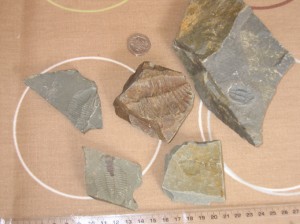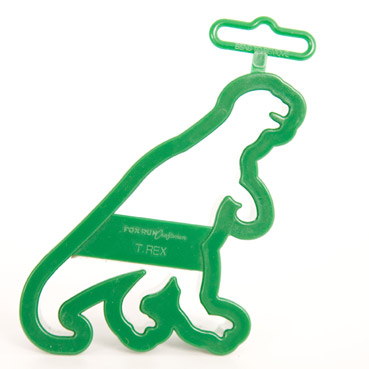Jurassic Coast says goodbye to Unique Tyrannosaurus rex Statue
T. rex Statue Removed from Beach by Public Health and Safety Officials
A six-metre-long metal sculpture of the skeleton of a Tyrannosaurus rex has been impounded by safety officers after it was sited on a Dorset beach. The large model, approximately half the size of an adult Tyrannosaurus was towed out into Weymouth Bay in Dorset (England) and deposited there, in a publicity stunt to promote the UNESCO world heritage site, claim the sculptures owners.
The unusual sight of the skeleton a large meat-eating dinosaur in the middle of Jurassic coast caused some amusement amongst the watching holiday makers but the local council and police failed to see the joke. Stating that this statue was in breach of health and safety rules, council employees assisted by the local police removed T. rex from his watery resting place and have impounded the sculpture.
Tyrannosaurus rex
The owner of the statue, Mr Paul Swaffield is demanding that the local council return the sculpture, which he has nicknamed “Tex”. The model was made several years ago to help promote a maze maize that Mr Swaffield owns. We note that the placing of the statue in Weymouth Bay coincides with the opening of many maize mazes at the start of the school holidays and being cynics we suspect that the promotion of the UNESCO world heritage site was secondary to the need to generate publicity for the opening of a maze tourist attraction. It certainly is a novel way of generating publicity, but the local authorities don’t see the funny side of the story.
Mr Swaffield commented:
“I just wanted people who saw it to say whether it is a good idea. The model is on wheels and I used a 110hp tractor to tow it down the slipway and into the sea at low tide. I drove it as far as I could – about 150 yards out – and left it there. It was an incredible sight and people thought it was the funniest thing that had happened in Weymouth for many a year”.
Unfortunately, for Mr Swaffield and Tex, local officials and beach lifeguards soon condemned the publicity stunt and demanded that the statue be removed.
He went on to state:
“Members of the public saw the reaction of the officials as the typical state the country is in today, which is lacking in fun.”
Fearing that the dinosaur may cause harm to bathers the local council called Dorset police and they helped to remove the statue to a local police compound. A spokesperson for the council stated that Mr Swaffield did not have any permission to put the statue up and the model had to be taken away for public safety.
The spokesperson added:
“It was quite a hazard so we had to take it away. It had metal spikes so we could not leave it on the beach. The dinosaur had to have a police escort when it was taken along the road as it was not a safe structure”.
This is certainly a novel way of generating publicity for a tourist attraction, but we can’t condone what has taken place at the Dorset beach. What may be a good idea for the likes of Anthony Gormley, does not seem to be every-body’s cup of tea. Besides, the idea of a Late Cretaceous theropod being used to promote Jurassic marine sediments is a little bizarre in the first place. Had the statue been a life-size model of a plesiosaur, then who knows what the council officials might have said.
For models and replicas of dinosaurs such as Tyrannosaurus rex, visit the models section of the Everything Dinosaur website: Prehistoric Animal and Dinosaur Models.













